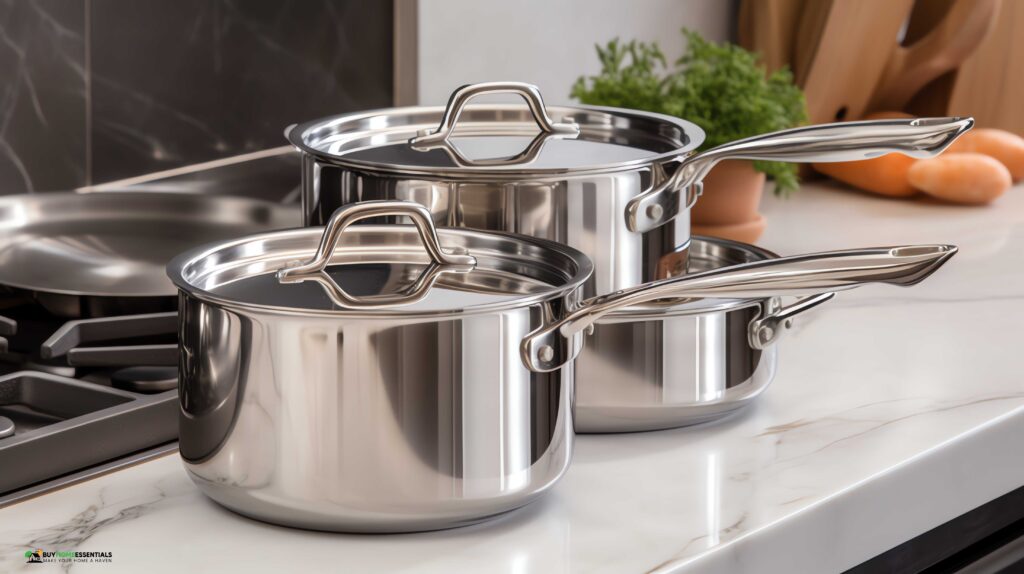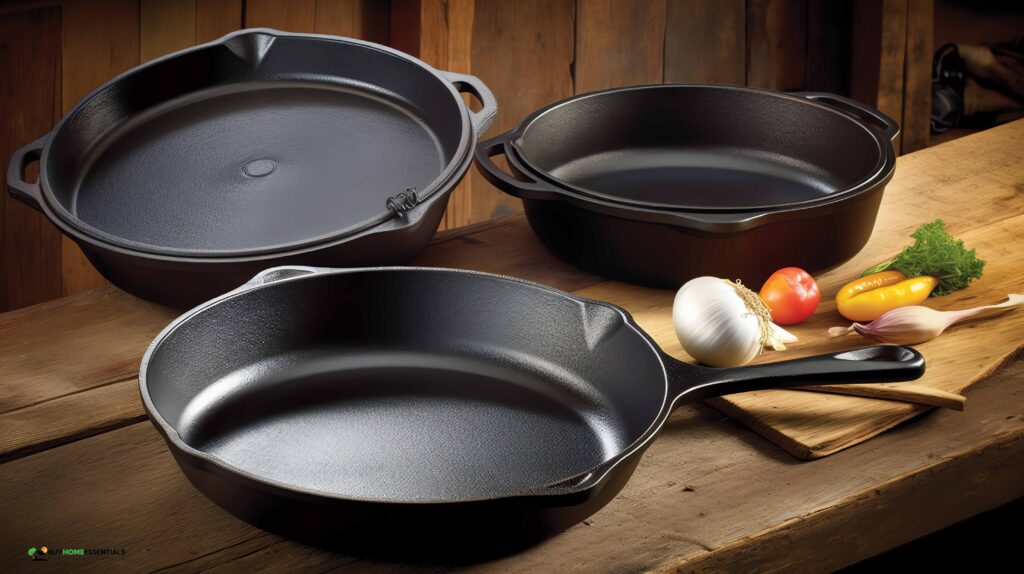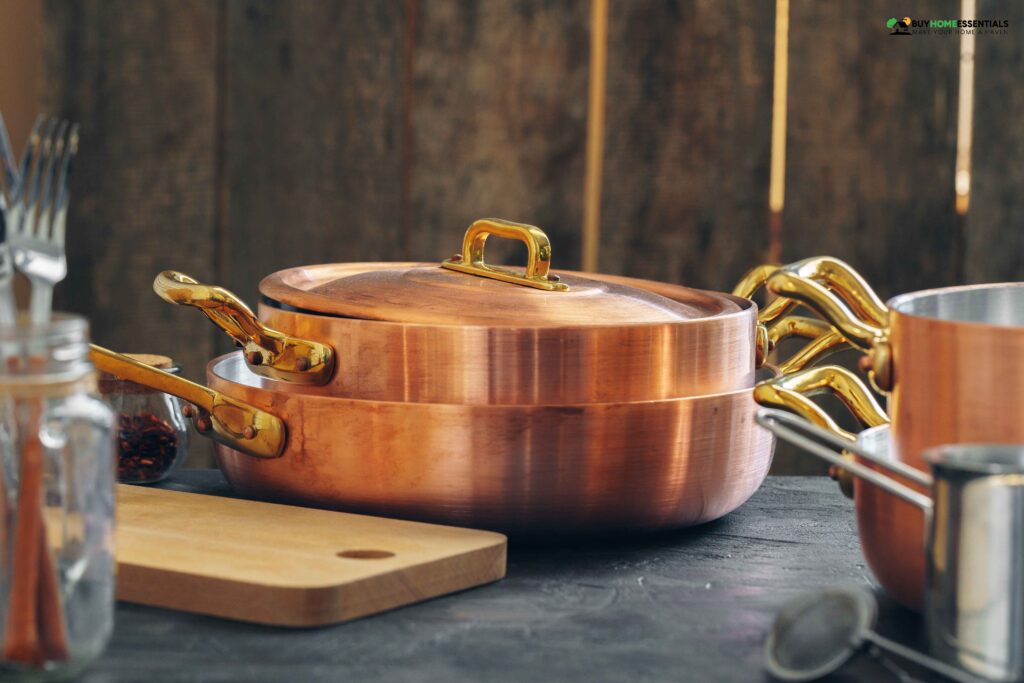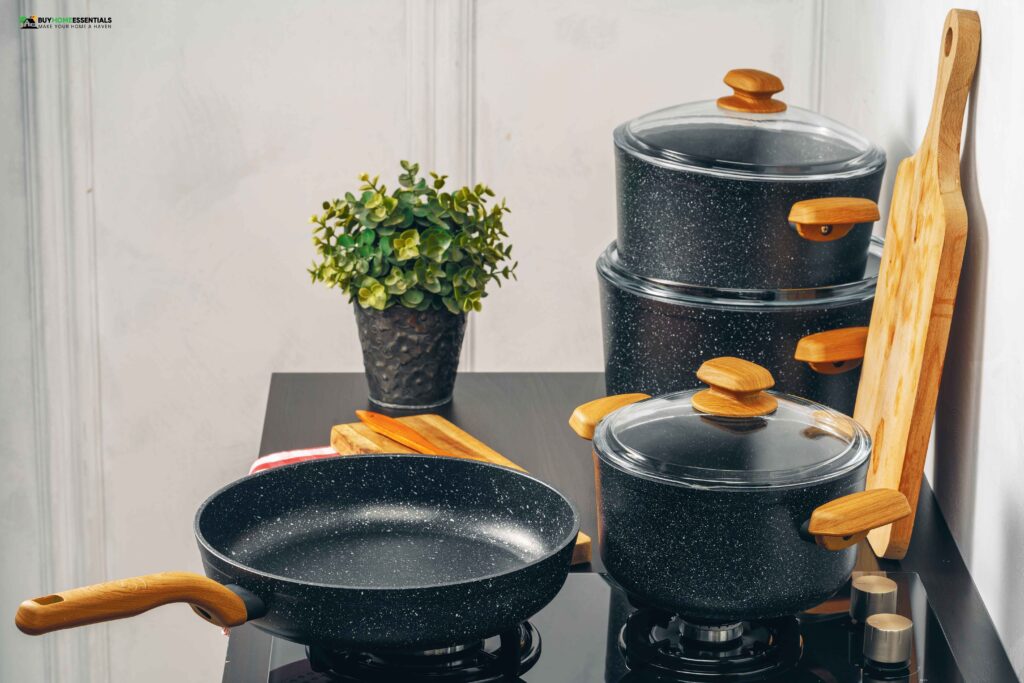Are you looking to revamp your kitchen cookware collection with aluminum cookware? Aluminum cookware is popular due to its lightweight nature and efficient heat conductivity. However, you should be aware of the aluminum cookware disadvantages as well. This blog post will explore the aluminum cookware disadvantages, revealing essential aspects that you should consider.
Aluminum cookware disadvantages include health risks and reactivity with certain foods. This article will provide the information you need to choose cookware that fits your lifestyle and cooking preferences. Let’s explore the disadvantages of aluminum cookware and find alternatives that are both functional and healthy.
What Are the Aluminum Cookware Disadvantages
You should be aware of the following potential drawbacks of aluminum cookware.
1. Health Concerns
While aluminum cookware is widely used, it raises significant health concerns. The leaching of aluminum into food during the cooking process is one of the primary concerns. This metal is reactive when exposed to acidic or alkaline foods, potentially transferring to food. Health issues associated with aluminum accumulation include neurodegenerative disorders and bone health complications.
Minimizing aluminum exposure in our daily lives is vital, primarily through items that come directly from food. Understanding aluminum cookware’s health implications is essential for a balanced approach to our culinary choices.
2. Durability and Scratching
While aluminum cookware offers affordability and excellent heat conductivity, durability is a concern. Aluminum is prone to scratching and denting due to its softness, mainly if it uses sharp utensils or abrasive cleaning materials. Eventually, these scratches can accumulate and affect the cookware’s performance and appearance.
Scratches can compromise aluminum cookware’s structural integrity, causing uneven heating and hot spots. Additionally, scratched surfaces may foster the growth of bacteria and other microorganisms, raising sanitation concerns.
3. Maintenance and Cleaning Challenges
It can be challenging to maintain the appearance and performance of aluminum cookware. The material may discolor, stain, and even warp when exposed to high temperatures. Additionally, some cleaning agents and methods can damage aluminum cookware’s surface, making maintenance harder.
Dishwashers and abrasive cleaning pads can scratch and mar the surface, compromising its aesthetic appeal and potentially affecting performance. Additionally, discoloration can be challenging to remove over time, affecting the cookware’s overall appearance.
Learn More: How to Clean Aluminum Pots
Best Alternatives to Aluminum Cookware
When considering cookware options, several materials serve as excellent alternatives to aluminum. These alternatives not only address the drawbacks of aluminum but also offer unique benefits for cooking and health. Let’s delve into each alternative in detail.
1. Stainless Steel Cookware

Stainless steel cookware is made from iron, carbon, chromium, and nickel alloys. It is known for its durability, versatility, and resistance to corrosion and staining. In addition to being non-reactive, the cooking surface will not impart metallic flavors or off-flavors to your food.
Learn more about How to season stainless steel pan
Advantages
- Durability: Stainless steel is highly durable and can withstand high heat, making it suitable for various cooking methods, including oven and stovetop use.
- Non-Reactivity: Unlike aluminum, stainless steel does not react with acidic or alkaline foods, preserving your dishes’ original taste and color.
- Easy to Maintain: It is easy to clean and dishwasher-safe, making maintenance hassle-free.
- Longevity: Stainless steel cookware lasts long, making it a cost-effective investment for your kitchen.
Related: Aluminum vs Stainless Steel Cookware
2. Cast Iron Cookware

Cast iron cookware is made by melting iron and pouring it into molds. Due to its exceptional heat retention and even distribution, it is perfect for slow cooking and deep frying.
Advantages
- Heat Retention: Cast iron retains heat for a long time, allowing even cooking and heat distribution throughout the cooking process.
- Versatility: It can be used on stovetops, in ovens, or over an open flame, making it versatile for various cooking techniques.
- Natural Non-Stick: When properly seasoned, cast iron develops a natural non-stick surface, reducing the need for excessive oil and enhancing the flavor of your dishes.
- Iron Enrichment: Cooking with cast iron can add a small amount of iron to your diet, which is beneficial for individuals with iron deficiencies.
3. Copper Cookware

Copper cookware is known for its exceptional heat conductivity and precise temperature control. It is usually lined with stainless steel or tin to prevent reactions with acidic foods.
Advantages
- Excellent Heat Conductivity: Copper heats up and cools rapidly, providing precise temperature control during cooking.
- Even Heating: It ensures even heating across the cooking surface, preventing hotspots and allowing uniform cooking.
- Aesthetic Appeal: Copper cookware is aesthetically pleasing and often used by professional chefs for its elegant and classic look.
- Durability: High-quality copper cookware can last a lifetime, making it a long-term investment for your kitchen.
4. Ceramic Cookware

Ceramic cookware is made from clay and other natural materials. It is known for its non-reactive surface and even heat distribution.
Advantages
- Non-Reactivity: Ceramic cookware is non-reactive and won’t leach harmful substances into your food, ensuring the original taste and flavor.
- Easy to Clean: It is easy to clean and often dishwasher-safe, making it convenient for everyday use.
- Versatility: Ceramic cookware can be used for baking, roasting, and serving due to its attractive designs and colors.
- Non-Stick Properties: Some ceramic cookware has non-stick properties, reducing the need for excess oil or fats during cooking.
5. Glass Cookware
Glass cookware is made from tempered glass and is known for its transparency, allowing you to monitor the cooking process.
Advantages
- Non-Reactivity: Glass is non-reactive and won’t alter the taste, color, or texture of your food, ensuring a pure and natural flavor.
- Versatility: It can be used in the oven, microwave, refrigerator, and freezer, providing flexibility for various cooking, storing, and reheating needs.
- Easy to Clean: Glass cookware is easy to clean and doesn’t retain food odors, enhancing its overall hygiene.
- Visual Monitoring: The transparency of glass allows you to monitor the cooking progress, preventing overcooking or burning visually.
They all have advantages over aluminum cookware, allowing you to pick based on your cooking preferences, health considerations, and kitchen needs.
Conclusion
The right cookware is paramount to an enjoyable and healthy culinary experience. Although aluminum cookware is lightweight and heat-conductive, it has some drawbacks. This article discussed these concerns, emphasizing the importance of making informed decisions.
There are exceptional alternatives like stainless steel, cast iron, copper, ceramic, and glass cookware. From durability and even heating to non-reactivity, each has distinct advantages. Understanding these options and their benefits will help you choose cookware that suits your style. Choose your cookware wisely and savor the pleasure of cooking!





